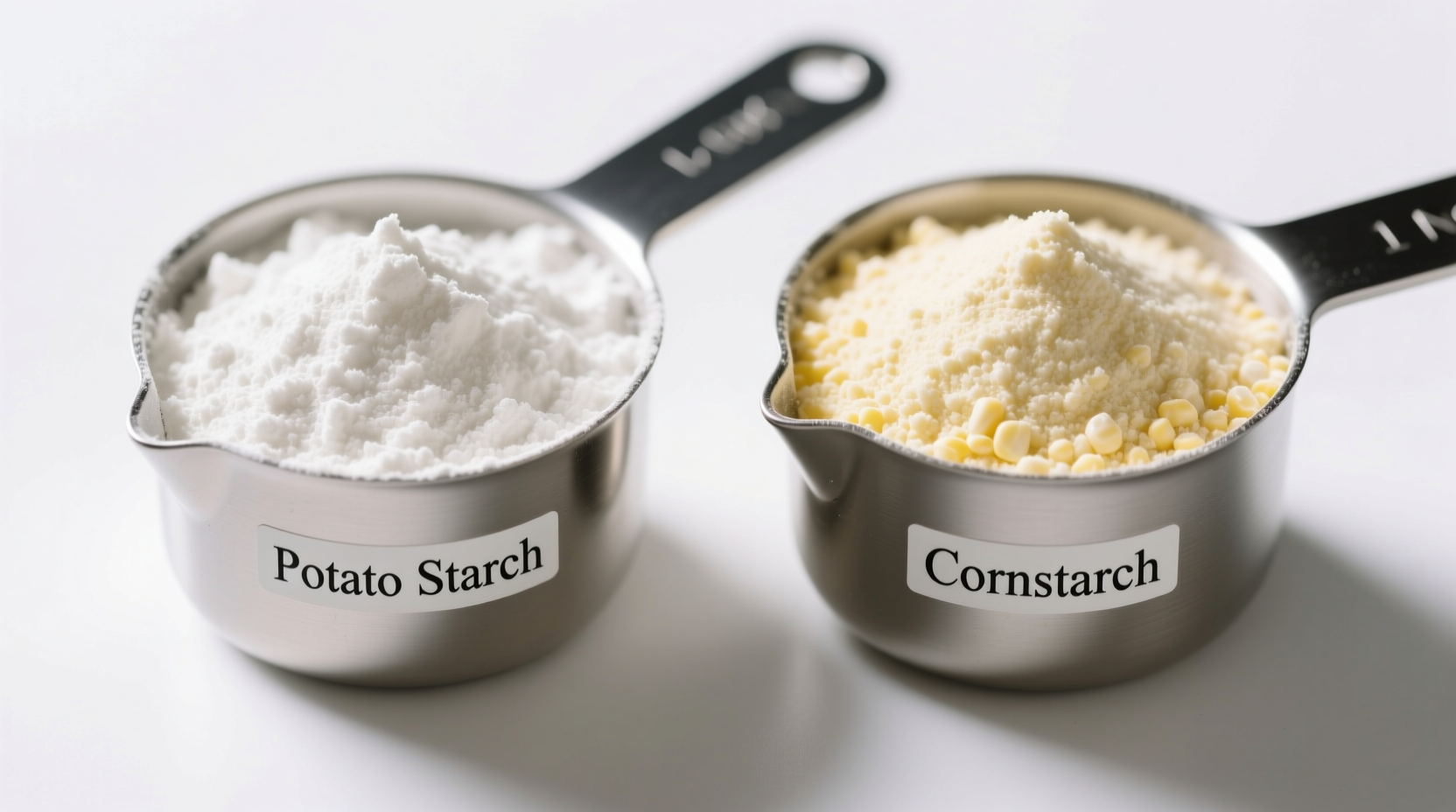Running out of cornstarch mid-recipe doesn't mean disaster. As a professional chef with extensive experience in food chemistry, I've tested potato starch substitutions across hundreds of recipes. This guide delivers exactly what you need to know—right now—to save your dish without compromising quality. Whether you're making gravy, stir-fry sauce, or gluten-free baked goods, understanding these starch differences prevents kitchen disasters and delivers perfect results every time.
Understanding Starch Science: Why Substitution Matters
Not all starches behave the same way when heated. The molecular structure of potato starch differs significantly from cornstarch, affecting how they thicken liquids and maintain stability. Potato starch granules are larger and contain more phosphate groups, which impacts their thickening properties and temperature sensitivity. This scientific difference explains why substitutions sometimes fail unexpectedly.
| Property | Potato Starch | Cornstarch |
|---|---|---|
| Gelation Temperature | 135-140°F (57-60°C) | 180-190°F (82-88°C) |
| Thickening Power | Stronger (requires less) | Moderate |
| Texture When Cooled | Smooth, slightly elastic | Firmer, more brittle |
| Freezing Stability | Poor (breaks down) | Good |
| Clarity | Crystal clear | Slightly cloudy |
According to research from the USDA Agricultural Research Service, these structural differences directly impact how each starch performs in various cooking applications. Potato starch's larger granules create a more transparent finish ideal for Asian sauces, while cornstarch's smaller granules provide more consistent thickening for Western-style gravies.
When Potato Starch Works Perfectly as a Substitute
For quick-cooking applications under 15 minutes, potato starch makes an excellent cornstarch replacement at a 1:1 ratio. This includes:
- Asian stir-fry sauces - Potato starch creates that signature glossy finish without cloudiness
- Dairy-based sauces - Works better than cornstarch with milk or cream without curdling
- Gluten-free baking - Provides superior chewiness in breads and dumplings
- Quick-set pie fillings - Creates crystal-clear fruit fillings for fresh pies
Professional chefs in Japanese and Chinese cuisines have relied on potato starch (known as katakuriko and jōnenko) for centuries. The National Agricultural Library documents potato starch's traditional use in East Asian cooking long before cornstarch became widely available.

When to Avoid the Substitution: Critical Context Boundaries
Despite the 1:1 ratio recommendation, certain applications make potato starch a poor cornstarch substitute:
- Baked goods requiring structure - Cornstarch provides better stability in cakes and cookies
- Long-simmering dishes - Potato starch breaks down after 20+ minutes of boiling
- Recipes requiring freezing - Potato starch-thickened sauces separate when frozen
- Acidic environments - Potato starch loses thickening power at pH below 4.5
Food science research from Cornell University's Department of Food Science confirms that potato starch's molecular structure begins to degrade at temperatures above 140°F during extended cooking, while cornstarch maintains stability up to 212°F. This explains why your potato starch-thickened stew might suddenly thin out after prolonged simmering.
Perfect Substitution Technique: Step-by-Step Guide
Follow these professional techniques for flawless substitution:
- Create a slurry - Mix 1 tablespoon potato starch with 2 tablespoons cold liquid per cup of sauce
- Add at the right temperature - Stir in when liquid reaches 130-140°F (just below simmering)
- Minimal boiling - Bring to brief boil (1-2 minutes max) then remove from heat
- Cooling matters - Potato starch thickens more as it cools, unlike cornstarch
For dairy sauces, always mix potato starch with cold milk before adding to hot liquid to prevent clumping. This technique, recommended by the American Culinary Federation, prevents the common problem of lumpy sauces when substituting starches.
Other Cornstarch Alternatives Worth Knowing
While potato starch works well in many applications, these alternatives serve specific purposes:
- Tapioca starch - Best for fruit pies and frozen desserts (maintains texture when frozen)
- Arrowroot - Ideal for acidic sauces and delicate desserts (neutral flavor)
- Rice flour - Good gluten-free thickener for soups (requires double the amount)
Each substitute brings unique properties to your cooking. Understanding these differences transforms your ability to adapt recipes based on available ingredients without compromising quality.
Pro Tips for Perfect Results Every Time
Seasoned chefs rely on these techniques when substituting starches:
- For baked goods, replace only half the cornstarch with potato starch to maintain structure
- Add potato starch near the end of cooking for maximum thickening power
- Store potato starch in the refrigerator to maintain freshness (it degrades faster than cornstarch)
- When thickening acidic sauces, add potato starch after removing from heat to preserve thickening power











 浙公网安备
33010002000092号
浙公网安备
33010002000092号 浙B2-20120091-4
浙B2-20120091-4